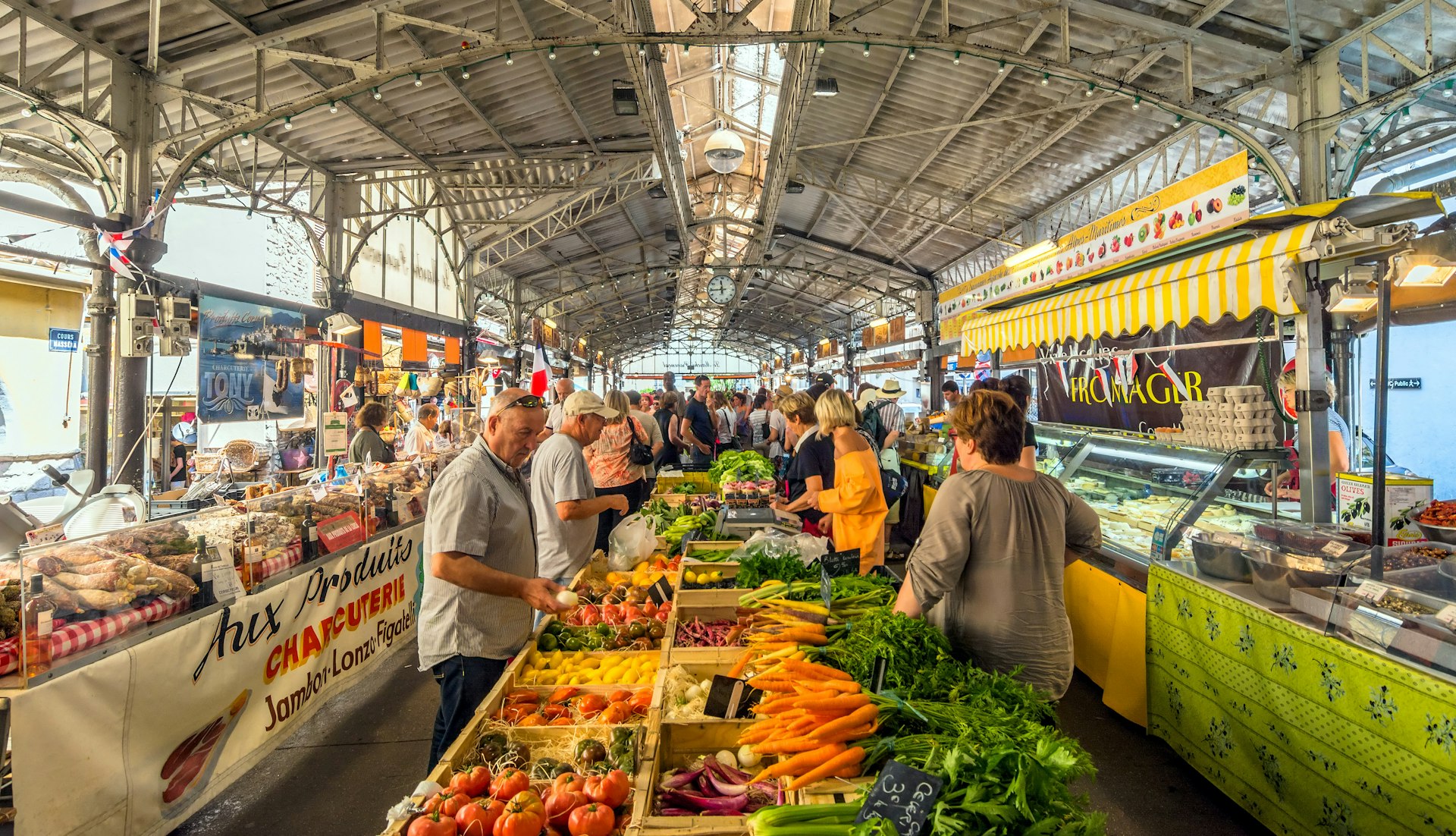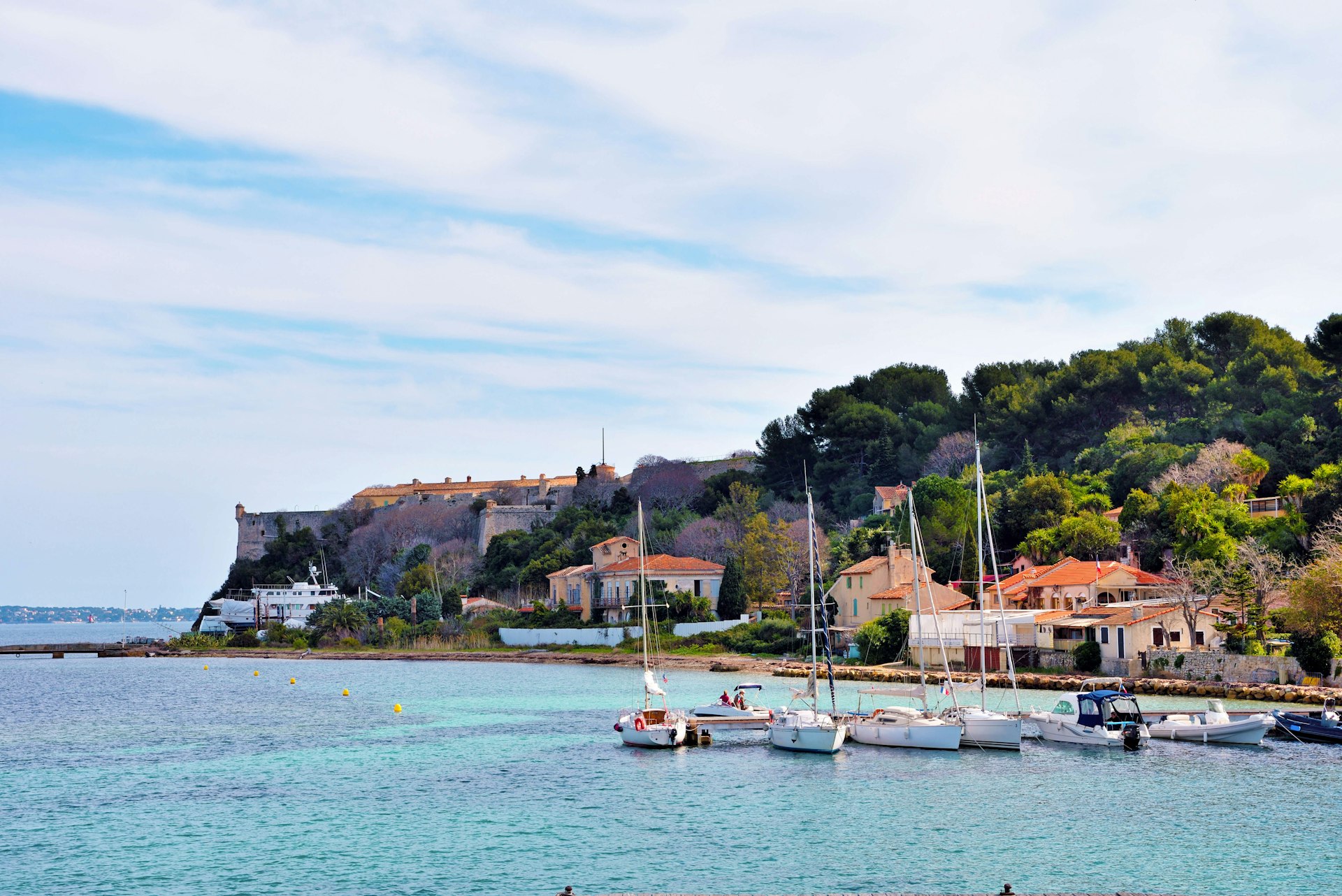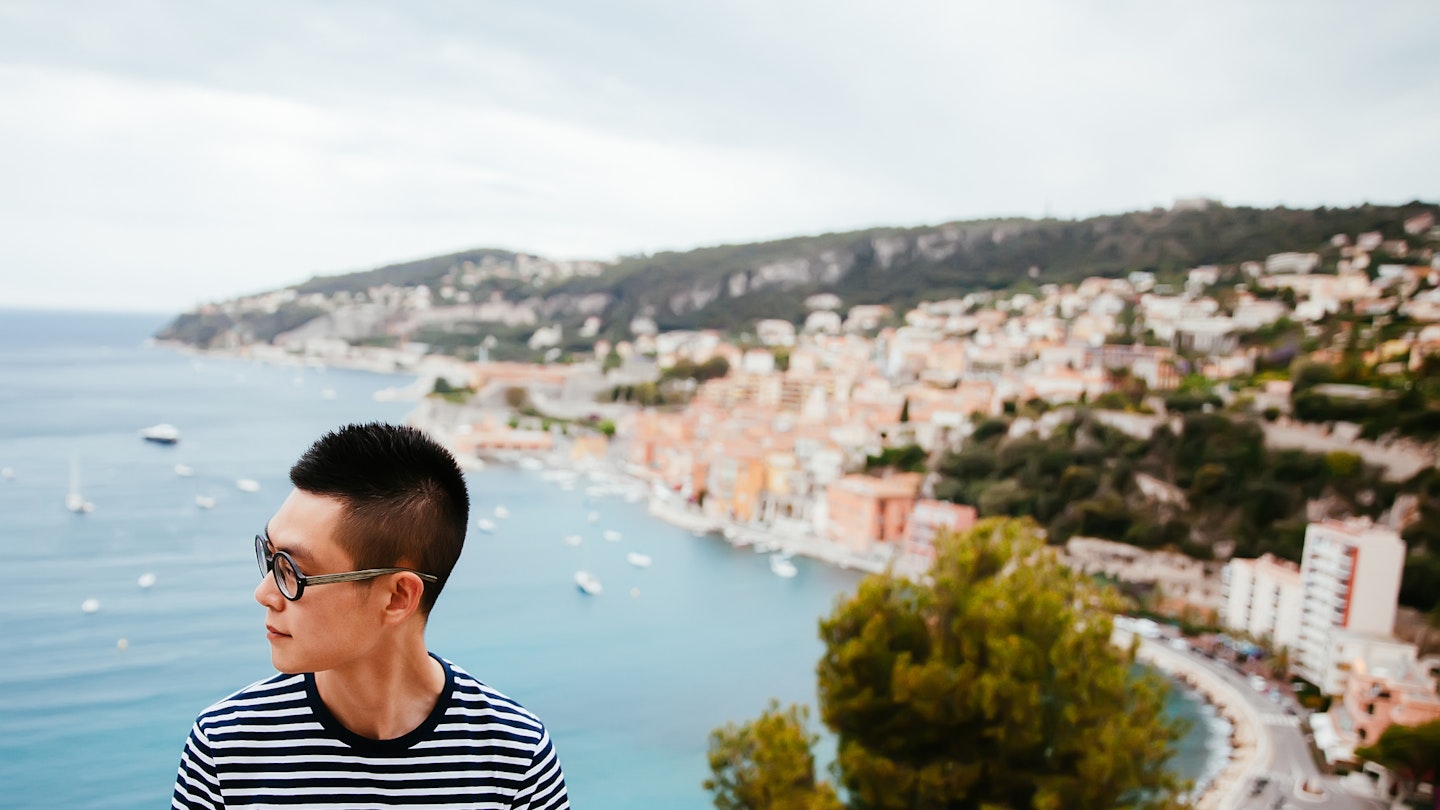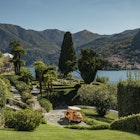With its spectacular arcing beaches, sun-kissed climate and old-world cool, Nice has been the busy city center of the Côte d'Azur for more than a century. But while the French Riviera’s largest city has myriad charms, there’s plenty to explore in the surrounding areas too.
From the glittering glamor of Monaco’s yacht-filled harbor to chic hilltop villages like St-Paul de Vence, it’s no surprise the cinematic landscapes of this famous corner of France have attracted artists for generations. Here are a few ideas for short but sweet getaways from Nice.

Antibes
Why go: Feel inspired by Fitzgerald
F Scott Fitzgerald used Antibes’ languid cobblestone streets and breezy shoreline as inspiration for his moody classic Tender is the Night, and its charms weren’t just restricted to the prominent American Jazz Age novelist. Over the years this historic slice of the Riviera has drawn in Pablo Picasso, Claude Monet and Graham Greene, and it’s easy to see why.
While Antibes is awash with tourists during the summer, make sure to explore the 16th-century star-shaped Fort Carré and the surprisingly varied Picasso Museum, and take a peek at the Hotel du Cap-Eden-Roc, styled by Fitzgerald in Tender is the Night as the enigmatic Hôtel des Étrangers.
Grab one of Jean-Luc Pelé’s creative gourmet sandwiches for lunch at L'Atelier Jean-Luc Pelé, and in the evening head for Lucas Marini’s cosy l’Arazur. Don’t miss the colorful Marché Provençal for a taste of Antibes’ freshest and finest.
How to get to Antibes
There are frequent trains down the coast to Antibes, and the journey takes just over half an hour. The coast-hugging section of the route after Villeneuve-Loubet is worth the price of a ticket alone.

Monaco
Why go: Experience the Riviera’s glamour capital
Monaco is a bizarre place. There’s an air of the absurd about it, and yet its hedonistic quirks are also the city-state’s most beguiling draw. High-rise apartments look out over a marina packed with bloated super-yachts, while the famous Grand Prix racetrack snakes its way through narrow roads and tunnels.
Lose yourself for a moment in a James Bond fantasy at the Monte Carlo Casino, before heading to the wonderful end-of-pier oyster bar Les Perles de Monte-Carlo. You may never be able to afford to live here, but this sumptuous spot will make you feel like royalty for a day.
How to get to Monaco
The train is the best way to get to Monaco from Nice, with frequent departures taking less than 30 minutes from Nice-Ville station. There's also regular bus service, but the train is a smoother ride and has simple connections to Menton too.
St-Paul de Vence
Why go: Tour some hilltop art galleries
You only need to wake up to another glorious deep-blue morning on the French Riviera to see why artists like Monet, Cezanne and Van Gogh were so drawn by its light. Perched high up in the dense hills northwest of Nice, St-Paul de Vence was a favorite of many visiting artists, and the small medieval village boasts almost as many galleries as it has restaurants.
The Fondation Maeght features a vast amount of 20th-century art, while the Gallerie Otéro is dedicated to unusual, derivative and contemporary art. Take a break at the evocative Café De La Place, or mix art with food at the La Colombe d’Or. An old favorite of Picasso and Matisse, this famous stone auberge features wonderful framed canvasses on its high walls.
How to get to St-Paul de Vence
The most cost-effective way to tackle this day trip from Nice is via tram and bus. Take the tram from the city center to station Parc Phoenix, and then jump on the meandering 400 bus. Journey time is one hour and 40 minutes. If there’s a group of you, splitting a taxi fare for the 19km (11.8-mile) journey would save much more time.

Île Ste-Marguerite
Why go: Escape to a bio-diverse haven
While Cannes does have its pluses – the fabulous views from the craggy piers and beaches to the west of the harbor, for example – the nearby island of Ste-Marguerite is a tranquil escape from a well-trodden tourist town. Just a 10-minute boat ride from the marina, the larger of the Îles de Lérins is a densely forested natural haven, and its coastline and the Étang du Batéguier lake is home to colorful birdlife such as ring-necked pheasants, Eurasian hoopoes and European goldfinches.
There are 20km (12.4 miles) of lush forest trails and paths to explore, but it’s the southern coast’s wild rocky coves that really set Ste-Marguerite apart. You could eat at the conveniently placed L’escale restaurant, but it’s better to pack a picnic and head for the coves east of Pointe du Dragon. With exceptional tree-framed views of the Massif de l’Esterel’s soaring peaks across the shimmering Mediterranean, Ste-Marguerite's secluded southern coast is the finest (and cheapest) lunch spot on the Riviera.
How to get to Île Ste-Marguerite
The TER train from Nice takes about 40 minutes to Cannes, and it’s then a 15-minute walk to the marina, followed by a 10-minute journey by boat to the island. Boats leave every hour and the last one back to Cannes departs at 6:00pm.
Marseille
Why go: Experience a wild change of pace
The easy-going coastal towns east and west of Nice are ideal for lounging on the beach or enjoying happy hour cocktails in the sun, but if you’re looking for a chaotic change of pace, then make for Marseille. France’s second-largest city, Marseille is effervescent and rough around the edges, but get the lay of the land first from the 154m (505ft) summit of La Garde. Its panoramas are breathtaking, and the byzantine Basilique Notre Dame de la Garde is gorgeous inside and out.
Head back down and walk around the bobbing white sails of the vast Vieux Port to the Musée des Civilisations de l’Europe et de la Méditerranée, a stunning museum exploring the history, culture and civilization of the Mediterranean region.
As a large port city, Marseille is a cocktail of cultures, and that’s reflected in its food. Sample bouillabaisse, the city’s signature fish stew, at Chez Michel, a family-run restaurant where locals have been coming since 1946. No city in France has a more intimate relationship with the cooking of North Africa, so head to Chez Yassine for classic Tunisian dishes such as ojja, brik, and lablabi.
How to get to Marseille
Marseille can be reached by the TER train in less than three hours. Though you can enjoy a full day if you leave early in the morning, consider stopping the night to make the most of this pulsating and underrated city.












